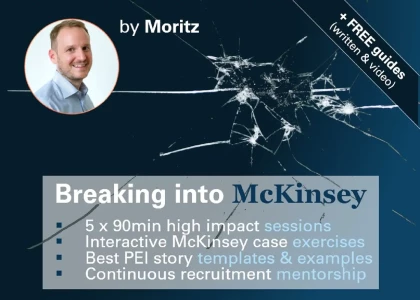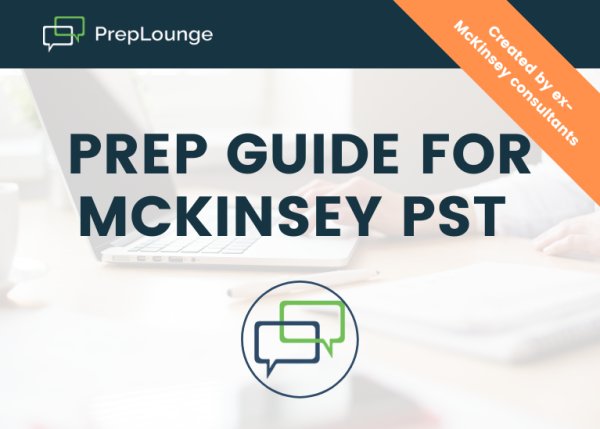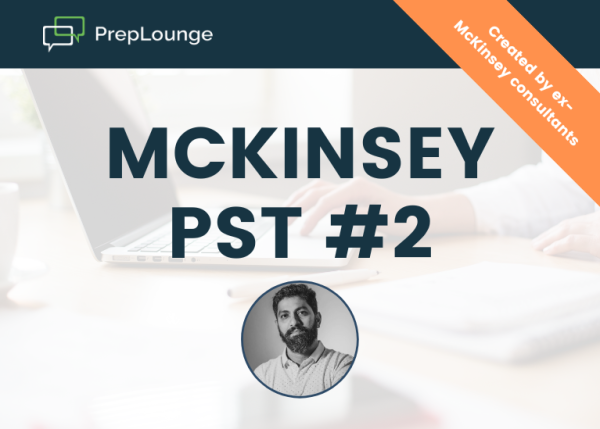I did a case someone who said you should not bring up new information in the conclusion. Is this true? For context, the case that we did was a market attractiveness case for putting a new factory in a new country. At the end it asked me to suggest potential risks, but during my conclusion, I brought up new risks that I didn't mention before. Am I allowed to do this? If so, is this good practice?
Werde aktiv in unserer Community aus über 452.000 Gleichgesinnten!
Can you bring up new information during conclusion?
Übersicht der Antworten
Great question and YES, you can bring up new points during your conclusion!
And I deliberately say points (for lack of a better term) and not information because those are different.
- Information: If you start introducing all sorts of actual new information e.g. numbers etc. that you should have utilized during the case, you might enter difficult territory.
- Points: However, if you're going to mention risk or other important points that are purely forward looking and a relevant expansion of your recommendation, the conclusion is exactly where to do it.
Hope this helps! Best of luck!
Hi there,
Q: I did a case someone who said you should not bring up new information in the conclusion. Is this true? At the end it asked me to suggest potential risks, but during my conclusion, I brought up new risks that I didn't mention before. Am I allowed to do this? If so, is this good practice?
You can definitely indicate risks you did not explicitly mention before (still related to your analysis) in the last part of the conclusion, that is, risks and next steps (part 3 below). However, you cannot base a recommendation on elements that have not been analyzed during the case (part 2 below).
This is how would recommend to structure a conclusion:
1) Repeat the objective. This will ensure you are answering what is relevant to the case. If you don’t repeat the objective, you may answer the wrong question. As an example:
- “Our goal was to understand (i) why profits are declining and (ii) how we could increase profits by XYZ”
2) Provide an answer-first solution. You don’t have to present everything you found in the case, only the answer to the question you just repeated and its supporting factors. You should use points analyzed during the case to justify your recommendation:
- “After our initial analysis, we found out that profits are declining due to a decrease in revenues in division 1 and that, in order to increase profits, with the information we have so far it seems a good idea to enter Market A. This is based on the following reasons:
- [SPECIFIC FINDINGS 1]
- [SPECIFIC FINDINGS 2]
- [SPECIFIC FINDINGS 3]”
3) Provide risks / next steps suggestions. You can always include next steps/ risks in your conclusion. You can refer to the elements present in your structure that you did not have time to cover or to risks related to the analysis you have performed during the case. As mentioned, this is the part where you can bring risks not explicitly mentioned before, although still related to the analysis you conducted:
- “As additional elements, we would like also to consider the following…[RISKS/NEXT STEPS]”
Best,
Francesco
Hi!
It's very simple, and I think some of the answers here are somewhat confusing or even misleading.
If you want to bring up a new aspect in the final conclusion, then you should always position this as a further aspect to be considered in order to make the recommendation more robust. It is a “next step”. You should NOT bring up such an aspect as if you had run an analysis on it - because you have not! So the general structure of a final answer usually follows this structure:
1. Answer to the key question
2. Main reason(s) for your answer (derived from your analysis)
3. Further considerations & next steps (here is where you can bring up new aspects and position them as described above).
Cheers, Sidi
Put simply you are absolutely allowed to bring up a new risk in the conclusion. This person doesn't know what they're talking about :)
Hi there,
i dont think there is a rule for that, you can bring new information to the conclusions (like additional risks you would consider, etc.), BUT the new information shouldn't be the key information for the case (e.g. pricing case and you would bring price elasticity only then).
Lucie
Was this answer helpful?
Hi there,
Good question. I think this is a classic example of taking good advice out of context.
The idea is that the conclusion is a recommendation which synthesizes the discussion so far. That's what they are testing for: synthesis. Can you draw a well thought-out recommendation from all the information you have processes thus far, can you support it well, consider risks and next steps appropriately, and communicate everything in an easy-to-follow manner? There's no more analysis and therefore the idea is that you are not making new arguments.
All that being said, if there's something relevant and important that you haven't said yet, by all means, you have to mention it during the conclusion. This is all the more so if they ask for risks! It doesn't make any sense not to answer the question well, just because the specific risks haven't been mentioned earlier. It doesn't make any sense to weaken your conclusion just because something was missing earlier.
Hope this helps and happy to go through in detail what a good conclusion looks like.
Best,
Allen
Yes, you totally can as long as obviously it doesn't contradict or confuse the main recommendations. Needless to say.
You cannot make any unsubstanciated claims / provide conclusions that are not supported by previous analysis.
Now as I understand it, you were asked a new question. I.e., what are the potential risks. So its only natural that you reanalyze the information you had and provide a conclusion based on that.
The simple answer is never bring new information on the conclusion.
You can add ideas that make your conclusion more creative, but never new pieces of information.
Hello!
I think it depends.
I wouldn´t make sense t bring up a new point when you are summarizing the analysis, coz only the most important ones should be there, and most likely if you haven´t mentioned it before is for a reason.
However, you can add new info in the next steps or risks section, for instance, without problems.
Hope it helps!
Cheers,
Clara






















